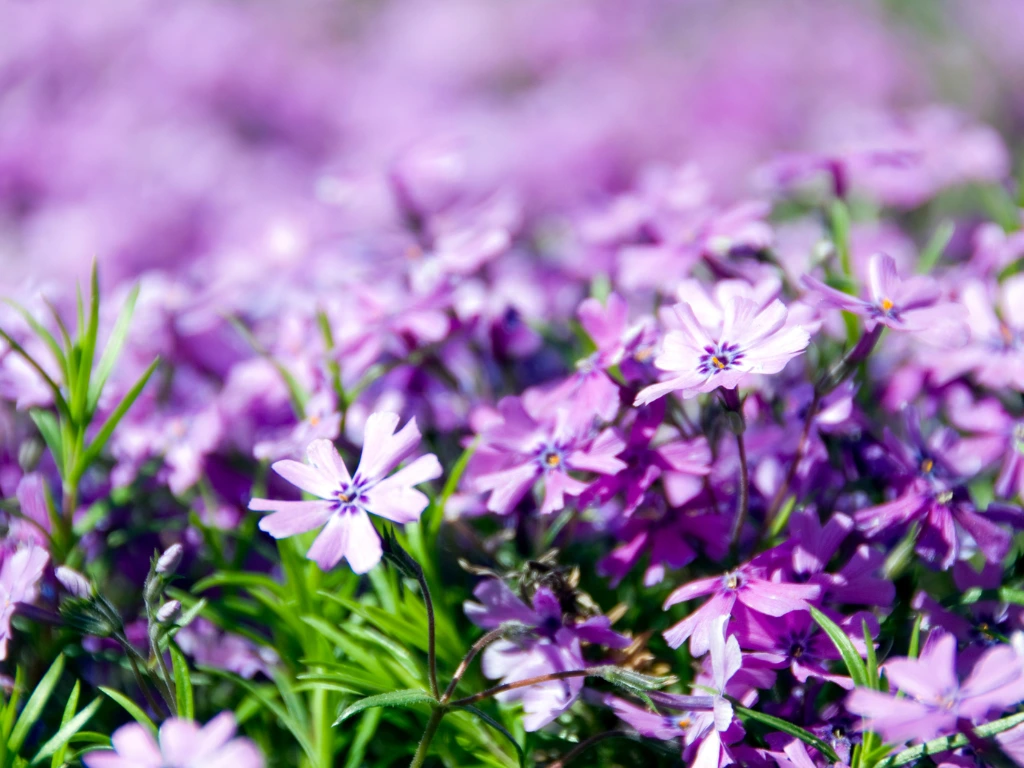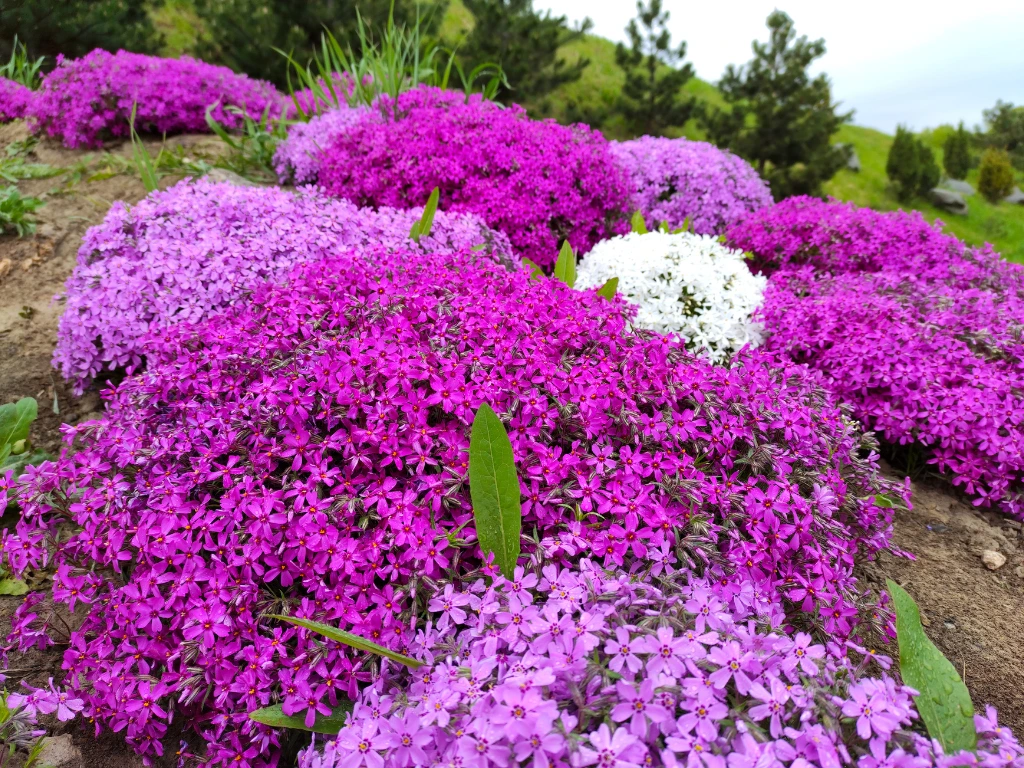To keep creeping phlox vibrant and strong all summer long, late spring is the ideal time to apply a dose of fertilizer for creeping phlox. This fertilization not only helps your plants recover after blooming but also sets them up for a gorgeous display of flowers and lush foliage throughout the season.
Creeping phlox is a hardy, low-growing perennial that adds beautiful color to your garden year after year. With the right care, including proper fertilizer for creeping phlox, it will thrive, offering stunning blossoms and dense foliage that last well into the warmer months. For healthy, vibrant plants all summer, late spring fertilization is essential.
Why Late Spring Fertilization Is Essential

Late spring fertilization comes right after your creeping phlox finishes blooming. At this stage, your plant has used up a lot of its energy to produce those vibrant flowers, so it needs a little extra help to replenish its reserves.
This second round of fertilization is crucial for a few reasons:
-
Rebuilding Energy: The nutrients help your phlox bounce back after flowering, allowing it to recover and thrive through the summer.
-
Stronger Foliage: Feeding your plants in late spring encourages healthy, dense foliage, which will keep your phlox attractive all summer and make it more resistant to pests and diseases.
-
Continued Growth: With the right nutrients, your phlox will be able to store energy for next year’s blooms, ensuring a continuous cycle of strong growth.
The Best Fertilizer For Creeping Phlox In Late Spring
Just like early spring, the best fertilizer for creeping phlox in late spring is a balanced, all-purpose 10-10-10 granular fertilizer. This formula is perfect because it provides equal amounts of nitrogen (N), phosphorus (P), and potassium (K), ensuring your plant gets the right mix of nutrients.
-
Nitrogen (N) promotes lush, green foliage and strong stem growth.
-
Phosphorus (P) helps with root development and encourages the formation of new buds.
-
Potassium (K) boosts flower production and improves the plant’s resistance to disease.
Using a slow-release granular formula ensures your plants get steady nutrients over time without the risk of overfeeding, which can cause excessive leafy growth at the expense of flowers.
How To Apply Fertilizer for Creeping Phlox In Late Spring
Timing is just as important for late spring fertilization as it is in early spring. After the blooms have faded and before the plant starts to slow down, it’s time to feed it.
Here’s how to apply the fertilizer:
-
Apply After Blooming: Wait until the flowers have faded and the plant is beginning to slow its bloom cycle. This will ensure your plant is ready to recover and continue growing.
-
Sprinkle the Fertilizer: Spread about 1/8th of a cup of 10-10-10 granular fertilizer for every square foot of plant space. Be sure to keep the granules off the foliage to avoid burning the plant.
-
Water Well: Once you’ve applied the fertilizer, water the area thoroughly. This will activate the fertilizer, helping it to soak into the soil and reach the roots faster.
Tip: Make sure not to apply fertilizer too late in the season. Over-fertilizing late in the year can encourage excessive leafy growth, making your phlox more susceptible to damage in the colder months.
Keep Your Phlox Vibrant All Summer Long

Once your creeping phlox has received its late spring fertilization, keep an eye on the plants throughout the summer. Regularly check for any signs of stress, pests, or disease, and remove any dead or fading blooms (a process known as deadheading) to keep your plants strong and attractive.
Post-Bloom Care Tip: As the blooms fade, deadheading helps redirect the plant’s energy from seed production back into root and foliage growth, ensuring it remains healthy and vibrant for the rest of the growing season.
Final Thoughts
Late spring fertilization is essential for keeping your creeping phlox vibrant and full of life all summer long. By providing your plants with the right nutrients after their blooming season, you help them recover and prepare for continued growth. With a little extra care and attention, you’ll enjoy lush, beautiful phlox that will brighten up your garden for months to come!
Frequently Asked Questions
1. How often should I fertilize my creeping phlox in late spring?
You should fertilize your creeping phlox once in late spring, immediately after the blooms have faded. This helps the plant recover and prepare for the upcoming summer season.
2. Can I use any type of fertilizer for my phlox?
While you can use different types of fertilizers, a balanced 10-10-10 granular fertilizer is the best choice for creeping phlox. It provides equal amounts of nitrogen, phosphorus, and potassium, which are essential for healthy growth and vibrant flowers.
3. What happens if I fertilize my creeping phlox too late in the season?
Over-fertilizing in late spring or early summer can lead to excessive leaf growth at the expense of flowers. It can also make your phlox more susceptible to damage from pests and harsh weather. It’s best to fertilize in late spring and avoid feeding again until the following year.
4. How do I know if my phlox needs fertilizer?
If your phlox is not producing as many flowers as usual or if the foliage looks weak and sparse, it may benefit from fertilization. Fertilizer will give your plant the nutrients it needs to recover and thrive.
5. Should I water my phlox after fertilizing?
Yes, watering is crucial after applying fertilizer. It helps activate the nutrients and allows them to reach the plant’s roots more effectively. Be sure to water thoroughly to ensure the fertilizer is absorbed by the soil.
6. Is deadheading necessary after fertilizing?
Yes, deadheading is important, especially after the blooming cycle. Removing faded flowers helps your phlox focus its energy on growing strong foliage and roots instead of seed production, ensuring healthy plants for next season.
For more helpful tips, don’t forget to check out our other articles, like ” Honeysuckle Vine Pruning Tips You Need to Know” and “Top 10 Best Plants That Improve Soil Quality, Making Your Whole Garden Thrive“. Happy gardening!
